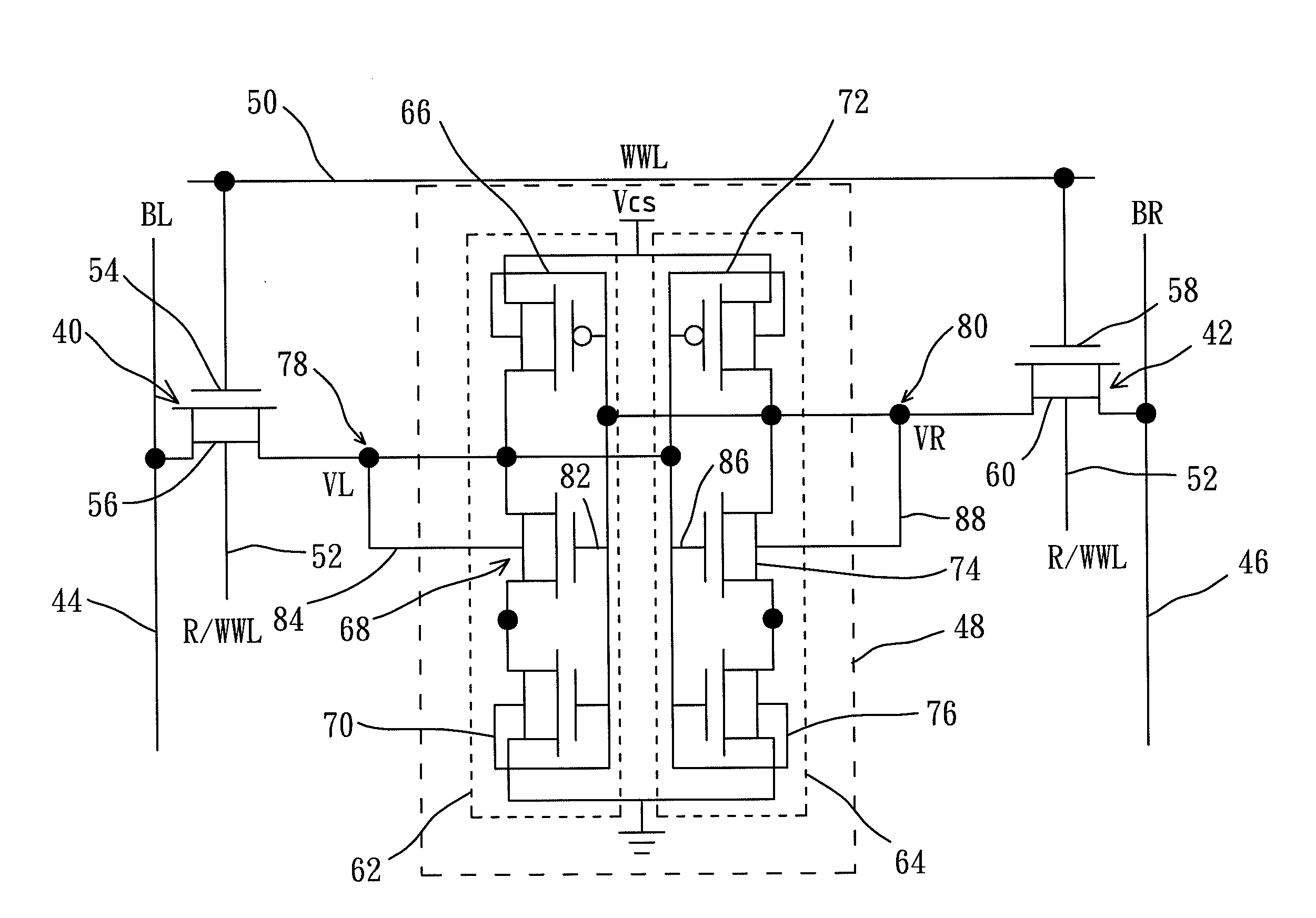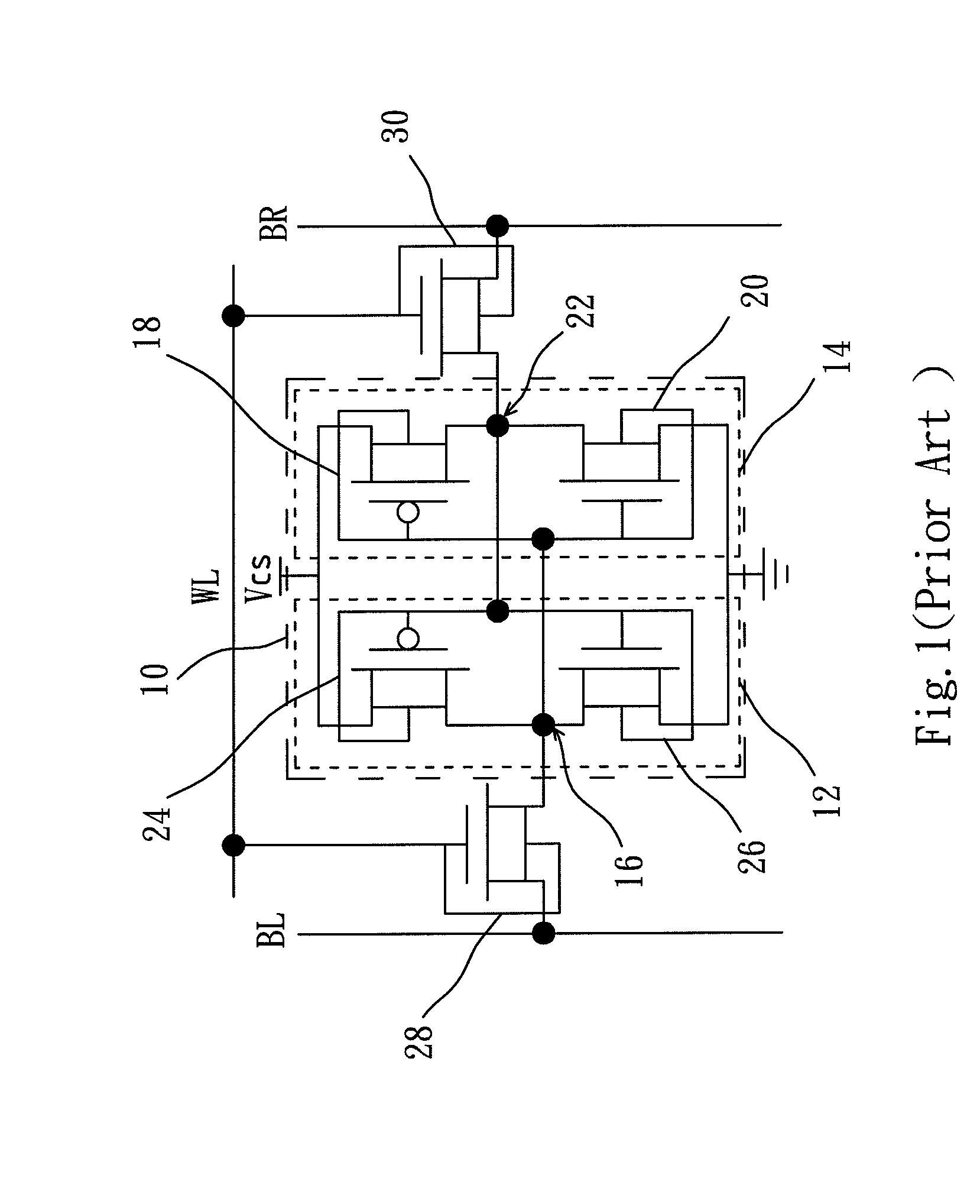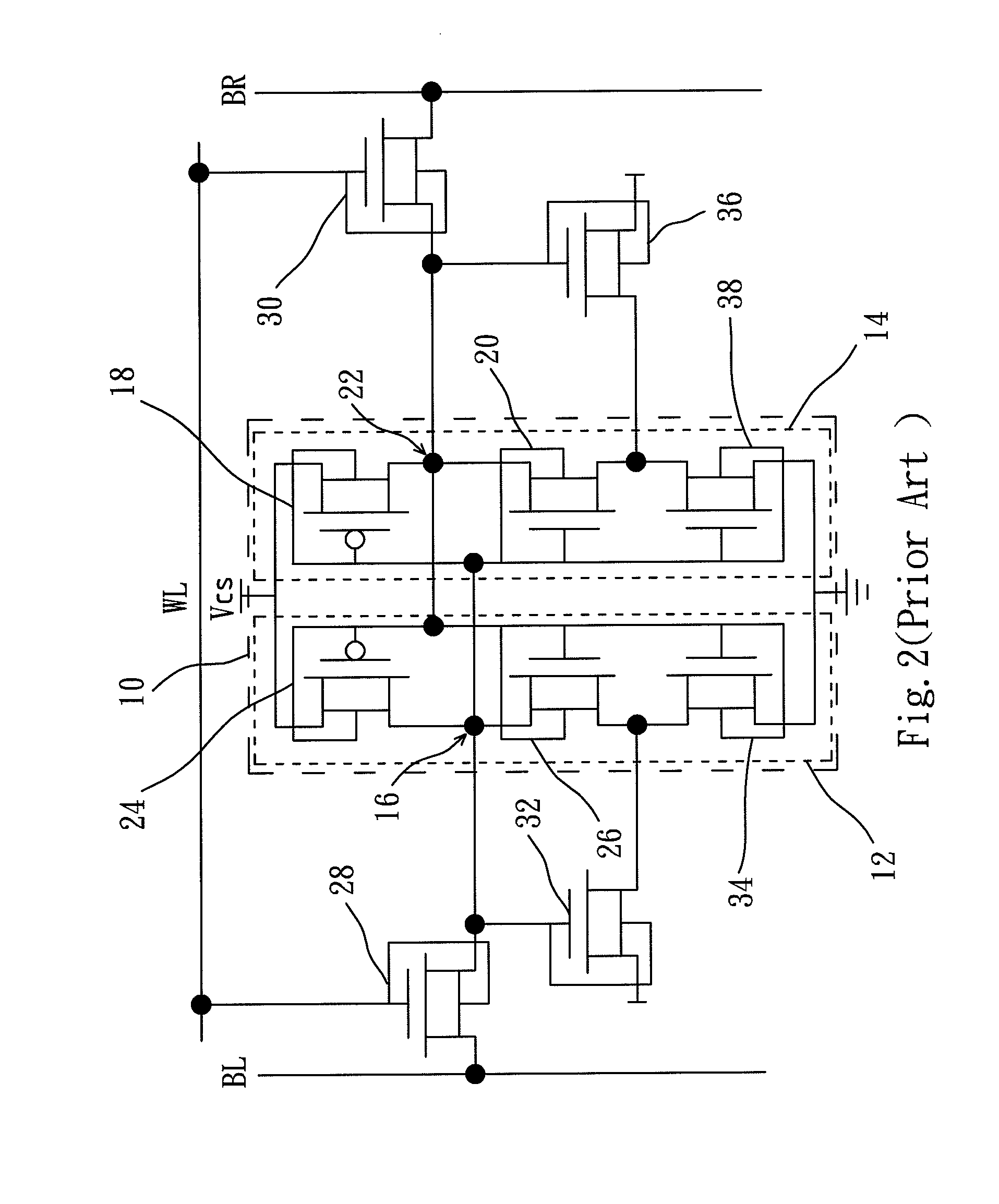Schmitt trigger-based finfet SRAM cell
a finfet sram cell, trigger-based technology, applied in the field of sram cells, can solve the problems of limited 6t sram operating voltage, variable and uncertainty of mosfet properties, read error, etc., and achieve the effect of reducing the number of transistors and chip area
- Summary
- Abstract
- Description
- Claims
- Application Information
AI Technical Summary
Benefits of technology
Problems solved by technology
Method used
Image
Examples
Embodiment Construction
[0023]The present invention is to solve the conventional problem that read errors are likely to occur in the 6T SRAM in a low operating voltage environment. The present invention improves the 10T SRAM into an 8T FinFET SRAM without compromising the performance.
[0024]Refer to FIG. 4 for a Schmitt trigger-based FinFET SRAM cell according to a first embodiment of the present invention. The Schmitt trigger-based FinFET SRAM cell of the present invention comprises a first control FinFET 40, a second control FinFET 42, a first bit line 44 (BL), a second bit line 46 (BR), a memory cell 48, a first read / write control line 50 (WWL), and a second read / write control line 52 (R / WWL). The first bit line 44 is connected with the drain of the first control FinFET 40 and supplies a first voltage signal. The second bit line is connected with the drain of the second control FinFET 42 and supplies a second voltage signal. The first control FinFET 40 has a first gate 54 and a second gate 56. The second...
PUM
 Login to View More
Login to View More Abstract
Description
Claims
Application Information
 Login to View More
Login to View More - R&D
- Intellectual Property
- Life Sciences
- Materials
- Tech Scout
- Unparalleled Data Quality
- Higher Quality Content
- 60% Fewer Hallucinations
Browse by: Latest US Patents, China's latest patents, Technical Efficacy Thesaurus, Application Domain, Technology Topic, Popular Technical Reports.
© 2025 PatSnap. All rights reserved.Legal|Privacy policy|Modern Slavery Act Transparency Statement|Sitemap|About US| Contact US: help@patsnap.com



